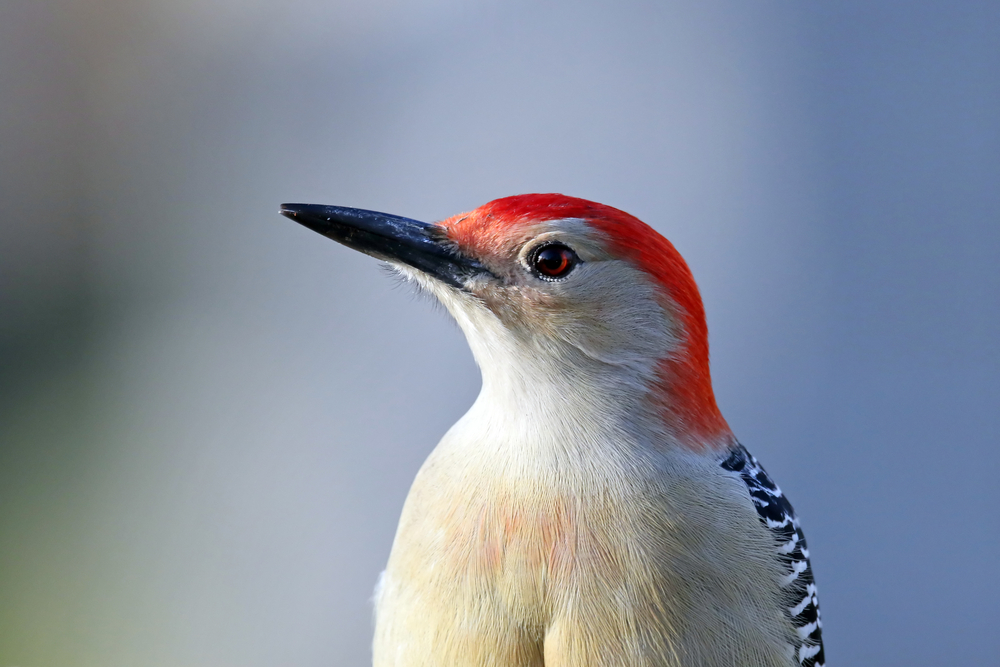Red-bellied Woodpecker, Melanerpes carolinus
Bill Rowe
This bird causes confusion: some call it a “red-headed woodpecker,” and it is. But it isn’t a Red-headed Woodpecker, capitalized, which is a different species with an entirely red head. The Red-bellied Woodpecker has a bright red hood, or “scarf,” while showing only a hint of a red belly- one of many creatures that are not particularly well named. It is a vocally conspicuous bird, with calls that resonate through the forest at all hours of the day, mostly either a hoarse kwirr or churr or a short, cough-like chiv-chiv. Learn these and you will find Red-bellied Woodpeckers everywhere. They also make a rapid-fire drumming on tree trunks, about one second in length and hard to distinguish from the drumming of some other species. As is typical of woodpeckers, both male and female use their chisel-like bills to excavate a nest hole in a dead tree trunk or limb, digging first inwards and then down to create a vertical chamber for the nest. On a bright note, the Red-bellied Woodpecker is a species “of least concern” in terms of its population: it is found all across the eastern United States, and its numbers have increased over the past 50 years in almost all parts of its range, while the range itself has expanded northward into the northernmost states and a little bit of Canada.
IDENTIFICATION: No problem: besides the red”scarf,” it has narrow black and white zebra stripes on the back and wings. Females are similar to males except that the red is limited to the rear half of the head. In other parts of North and Middle America there are several closely related species that look a lot like the Red-bellied, notably the Golden-fronted Woodpecker of Texas, but that is not an issue here.
ST. LOUIS STATUS: A common year-round resident, occupying every forested area as well as small woodlots and well-treed parks and suburbs. Probably one of our two most numerous woodpeckers, along with the Downy. Unlike the Red-headed Woodpecker, it is not known to migrate through or out of this area, but it may move around locally to some extent.
Learn more and listen to the calls of the Red-bellied Woodpecker here.




